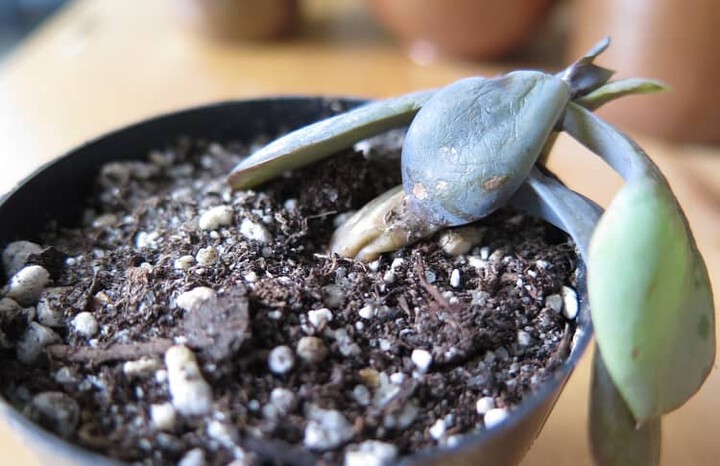Although a common issue that gardeners face, nobody likes dealing with a case of root rot.
As succulents can be susceptible to this fungus more than other plants, you’ll want to act quickly when you suspect a case, so check out these tips for what you can do.
Never attempt to use a fungicide or pesticide that claims to be able to treat root rot until you are sure that’s what it is. You can contact a local agricultural agent to identify the issues of your garden, otherwise treating something that’s not root rot with a fungicide will do serious harm to your plants.
Even with the best of care, root rot does still occur in some cases, especially when dealing with succulents. The best thing to do is be aware of the warning signs so you can get on top of the problem and save your plants before it gets worse.
Choose a soil and pot that correlates with the specific plant species you own. For example, a healthy succulent needs more than just soil to grow and requires ingredients like peat moss, bark, sand, and granite to give it adequate drainage.
Make a point of checking all of your indoor plants once a month to look for signs of root rot. If needed, you can dig a little into the soil to inspect the roots or repot them if you suspect the soil isn’t healthy enough.
Related Questions
Root rot is just one of the many annoying problems that face the average gardener, and whether you have one succulent or 50, you’ll probably encounter it at some point.
We’ve answered some FAQs about caring for these plants that can give you a push in the right direction and make it easier to care for your favorite greenery.
Why Is My Succulent Stem Rotting?
When your succulent’s stem appears to be rotting, it’s likely due to excess moisture being stored here.
You may have to slow down on the watering schedule you have in place and make sure they’re getting enough sunlight. If the stem has blackened, cut it off to below this point, so that it doesn’t infect the rest of the plant.
How To Tell If My Succulent Is Overwatered?

If you suspect you’ve been watering your succulent too much, you can confirm this with a few signs your plant is giving you.
First, you’ll see the leaves look rubbery instead of firm, and they may bend easily. Secondly, the leaves might look shriveled and dry, even though they’ve been getting an excessive amount of water.
When Should Succulents Be Repotted?
Depending on the type of succulent you have and whether it’s dormant in the summer or winter, you’ll have a different schedule for repotting.
Most succulents should be repotted once every two years to keep them healthy and give them enough space to grow, as long as you choose the right season to do it.